PINK CONNE ION

Vol 10 Issue 3: Feb - April ‘24

Dr Ratan Kar
A friend of the Jarawas in Andamans
Antara Pal
‘Life is not always what you expect’
Stepwells
Hyderabad’s new cultural spaces


Vol 10 Issue 3: Feb - April ‘24

Dr Ratan Kar
A friend of the Jarawas in Andamans
Antara Pal
‘Life is not always what you expect’
Stepwells
Hyderabad’s new cultural spaces
TWe are a generation obsessed with the way we look, mostly because we live in a consumerist society, where good looks are at a premium. We all want to look like those models who sell us clothes and watches in commercials, not realising that it’s an unattainable fantasy. Besides, these days everything is photoshopped, and people are not what they seem to be.
Looks are also a matter of genetics and however many nose jobs or facial restructuring we get done, it will be tough to look like those models we are trying to emulate. And, who says we must all look alike? After all, each one of us has a unique spark that makes us special as individuals.
Rather than worry about age catching up with us, (as it will one day, or another) we should aim to be healthy with moderate exercise, good eating habits and a healthy lifestyle.

More importantly, we need to have those regular health check-ups so cancers or heart diseases are caught early on. As Dr Raghu Ram keeps emphasising tirelessly, go for those mammograms so that we detect breast cancer when it is at a treatable stage. Our cancer survivor, Antara Pal had everything going for her, till her dreams came tumbling down when she discovered she had cancer.
We never know what life holds in store for us, and we can only hope that we all have the courage to face the many googlies life throws at us.
Ratna Rao Shekar
Thirty-nine-year-old Antara Pal on her battle with breast cancer, and how she fought this back with equanimity
MAKING A DIFFERENCE
Dr Ratan Chawla treated the reclusive Jarawas of Andaman and Nicobar Islands for a decade and became their friend. Meet the adventurous Padma
Shri awardee
HERITAGE
What makes Telangana’s historic stepwells unique is that they were built around functionality. Today, they are actively being restored as cultural spaces
MY VIEW
World Cancer Day is marked on February 4 to raise awareness about cancer prevention. Dr P Raghu Ram gives pointers to lowering your risk of getting breast cancer
UBF DIARY
A summary of key events and happenings at UBF and a round-up of the talks delivered by Dr Raghu Ram around the country



EDITOR
Ratna Rao Shekar
CONTRIBUTORS
Minal Khona
Mallik Thatipalli
Nivedita Choudhuri
DESIGN
Malvika Mehra
COPY EDITOR
Kavitha Shanmugam
PUBLISHED BY Ushalakshmi Breast Cancer Foundation
PRINTED AT
Pragati Offset Pvt Ltd., 17, Red Hills, Hyderabad - 500 004
KIMS-USHALAKSHMI
Centre for Breast Diseases
Krishna Institute of Medical Sciences, Minister Road, Secunderabad - 500 003
+91-91009 13217
ubfhyderabad@gmail.com

www.breastcancerindia.org
“In one day, it all came crashing down”
Discovering she had breast cancer at the peak of her life devastated Antara Pal. But she fought it with unwavering resolve and bounced back even if her dreams had crashed. The brave cancer survivor accepted all the grim side effects with equanimity and grace writes Minal Khona
Alot of young women today put marriage on hold to focus on making a successful career in the corporate world. And why not, when women can have it all—marriage and babies—whenever they feel ready. This was Antara Pal’s plan too.
But life clearly had other plans for her. Working currently with Reliance Retail in Bengaluru as deputy GM, finance, Antara now happens to be a breast cancer survivor.
She vividly recalls, “I was in my hometown, Kolkata, at that time living with my parents. I was 39 years old and working with Spencer’s Retail Limited. On March 10, 2019, on Holi, I felt a lump in my right breast. I was not comfortable and discussed it with my mother. We decided to visit a doctor immediately. Instead of a GP, we went directly to an oncologist to be doubly sure. She suspected a malignancy from the physical examination itself.”
A mammogram and a core needle biopsy confirmed she had breast cancer. Fortunately, the staging PET CT scan did not show any spread of cancer outside the breast.

The shock
The news understandably shocked Antara and her mother. She says, “We were silently listening to the doctor because we had no reaction. We went through the process, came home and told my father and brother about it. Everyone was shocked, but thankfully, none of us panicked.”
There had been no history of cancer on either side of her family.
Additionally, Antara led a healthy lifestyle, with regular exercise and timely meals. She does admit to being driven and passionate about her career, however. And being an emotional person, she tended to get hurt easily.
After the devastating news, Antara acted fast. She recounts, “I remembered an ex-colleague, now a friend, who was heading the oncology division (India) at Dr Reddy’s Laboratories in Hyderabad. I called him and disclosed my medical condition and sought his advice. He asked me to come down to Hyderabad and consult Dr Raghu Ram, which I did.”
Another reason Antara chose to go to Hyderabad for her treatment was because the oncologist in Kolkata advised her to undergo a mastectomy without any delay. She felt she was being “rushed” through the treatment without any counselling.
“I was not ready mentally to lose a breast,” she reveals.
The Counselling
I am really blessed that my parents, my brother and my close friends were so supportive in helping me fight this situation. Not for a minute did any of them have a negative thought, and all they wanted was that I should make a full recovery
Meeting Dr Raghu Ram reassured Antara on multiple levels. After a thorough assessment he explained the diagnosis and the stage of the disease. He reassured her that a mastectomy was not necessary and that her breast can be preserved. She recalls, “He was very empathetic and emphasised that there would not be any defect in the breast after removing the lump. As the cancer was over 3 cms, he told me that I would need to be given chemotherapy prior to surgery (neoadjuvant therapy) to shrink the tumour size, which would make breast conserving surgery feasible.”
“His counselling skills are truly second to none and I must thank my stars for finding the right doctor,” she adds. Antara


was relieved of the anxiety that mastectomy is not the only surgical option. She learnt that her breast could be preserved and that lumpectomy leading to a visible dent in the breast is a myth.
Further, she says, “For the first time, I heard the term ‘Oncoplastic surgery’, which involves the excision of the cancerous lump coupled with reshaping the dent in the breast so that there is no defect. This ensures a normal shape and appearance.”
Antara was diagnosed with breast cancer on March 13, 2019 and her first chemotherapy started on April 22, 2019.
As the tumour measured 3.5 cms, four cycles of neoadjuvant chemotherapy (chemotherapy prior to surgery) were given to her, which was followed by surgery on June 25, 2019.
Recalling the details about her surgery, Antara recounts how her breast cancer shrunk significantly after chemotherapy. A fine wire was inserted into her breast under local anaesthesia on the day of the surgery just prior to taking her to OR.
The wire, which acts as a guide for the surgeon to localise the cancer (which was almost impalpable) is normally done by a radiologist. However, Dr Raghu Ram, who was trained in undertaking this procedure in the UK, did it in seconds and before she knew anything, the wire was in place, she explains.
She underwent a right breast wire guided wide local excision with axillary clearance (removal of lymph nodes in the armpit). And her surgery went off well and the post-operative
recovery was smooth. “I was up and about within a few hours after surgery and went home the next day,” she recalls.
This was followed by the second set of four sessions of chemo, starting from July 19, 2019. She went back to work on September 11, 2019. Later, she had radiation therapy for a period of three weeks and completed the treatment cycle on October 21, 2019.
Battling side effects
Sadly, for Antara, while most of the boxes got ticked off, she had to reconcile herself to the many side effects brought on by chemotherapy and radiation therapy. As chemo can affect fertility, Dr Raghu Ram referred her to Dr Vyjayanthi, a fertility specialist prior to commencing treatment. “Unfortunately, my ability to preserve my fertility in the future was bleak due to my age, and my egg count was also low. All of this was very hard for me and my family to accept,” she narrates.
I always felt I had divine protection in the form of Dr Raghu Ram’s counselling and treatment. Breast Conservation Surgery (BCS) under his expert care protected my appearance and increased my confidence levels
She says with regret evident in her voice, “The day I came to know about all the adverse reactions my medical condition had triggered, I was shattered. I was at a transitional age, almost at the peak. On the personal front, I was evaluating marriage proposals to settle in a relationship and have a family. Professionally, I was moving towards a leadership role at work from mid-management level. In one day, it all came crashing down. It felt like my dreams broke like a house of cards. Accepting the fact that I can never bear a child, my sexual performance may be poor, and I may have an early menopause was difficult.”
The recovery
Several factors contributed to Antara’s full recovery. She says, “I am really blessed that my parents, my brother and my close friends were so supportive in helping me fight this situation. Not for a minute did any of them have a negative thought, and all they wanted was that I should make a full recovery. The courage and conviction which my family showed made me only stronger to fight cancer and get back to life. I always felt I had divine protection in the form of Dr Raghu Ram’s counselling and treatment. Breast Conservation Surgery (BCS) under his expert care protected my appearance and increased my confidence levels.”
Within 25 days of her last chemotherapy, Antara went back to work. She had already purchased wigs to cover her scalp
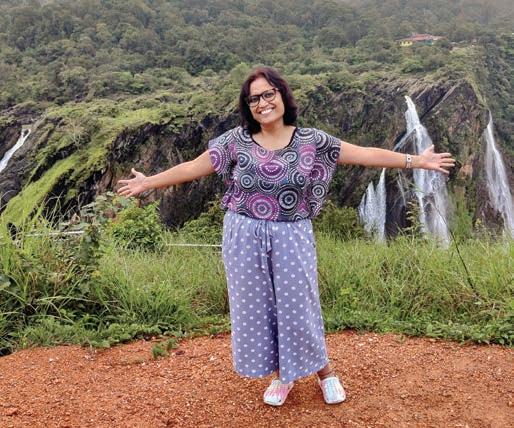
when the hair fall started. She also slowed down a bit as her body needed time to heal physically and mentally. By the time she had her check-up in February 2020, she was perfectly fine.
Antara shares that she had kept her medical condition very private. Except for her family (parents and brother) and very few friends, and her company where she needed to disclose the fact, nobody knew about her condition. “I didn’t want to feel pitied. Also, I didn’t want to be treated differently post recovery,” she says.
As for the side effects, besides the hair fall, Antara experienced cramps, where the hands and feet go numb, the body aches, there’s excessive itching and loss of appetite. She says, “I didn’t feel like eating at all, though I had no nausea. My hair started growing back three months after treatment. To me, it seemed like as an adult I had experienced life as a baby once again, because my parents took such good care of me. Today, my appetite is back, I regained my skin colour, but I have had an early menopause.”
On the fitness side, Antara used to play badminton and table tennis earlier; she is not allowed to anymore. The lymph nodes
in her right arm were removed, so she is not allowed to play or do anything that would lead to exertion in her right arm.
“I am allowed swimming which I love. I use my left hand more when I travel, and have learnt to work around not carrying too much stuff when I do,” she says, adding that she has to take Tamoxifen 20 mg every day to lower the risk of recurrence.
Some adverse effects get identified late—almost after two to three years. In her case, it was thyroid dysfunction, for which she now has to take regular medicines.
Currently, Antara is based in Bengaluru and at 43, lives a full life, despite the regrets. What advice would she give to other many young women like her, who are ambitious and driven?
She says, “Though I had regular health check-ups, I got diagnosed with breast cancer. And yet, I had no information or knowledge about the disease. I would tell everyone that it is very important to be ‘breast aware’—any new changes in the breast must be reported to your doctor without delay. Breast conservation can be a life transforming option. If you don’t know much or if you are misguided, you or your family can end up making the wrong decision because you are disheartened by the nature of the disease. Choosing the right doctor is extremely important to heal the body, mind and soul.”
She continues, “I also think, if a woman is single at 30, and she may want to marry in the future, she must conserve her eggs. Save your eggs, so even if by a stroke of bad luck, you get cancer, you have hope of having a family in the future.”
She is also a believer now in living a stress-free lifestyle. “Earlier, I used to take on a lot of stress. Now, I don’t allow little things to bother me. Besides a healthy lifestyle, reducing stress is crucial for prevention.”
Today, Antara has no restrictions in her lifestyle or diet. She has her regrets naturally, but with stoic acceptance, she has managed to find her pockets of happiness. Like she encapsulates her view on life with these words: “My parents are happy that their daughter is living a healthy life. That’s all that matters for now.”
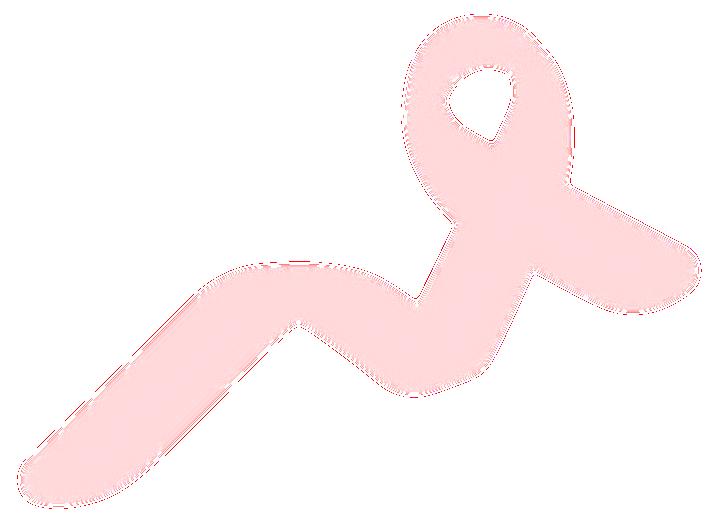
‘Antara had excellent aesthetic outcome after oncoplastic surgery’
Surgery for breast cancer affects how the breast looks and feels. With advances in cancer care, it is increasingly possible to preserve the breast and ensure excellent cosmetic outcome through various oncoplastic techniques. I am delighted that Antara Pal has had an excellent aesthetic outcome after her surgery. Her unwavering resolve and indomitable spirit in the fight against cancer has enabled her to emerge as a breast cancer “conqueror”. I wish her the best of health always.

Armed with the zeal and curiosity of an anthropologist while retaining his compassionate side as a medic, Dr Ratan Chandra Kar was passionate about working with tribals in remote areas. That’s how he ended up treating the reclusive Jarawas of the Andaman and Nicobar Islands for nearly a decade. He was there to help when a measles outbreak nearly wiped them out. And, he gradually became friendly with them and felt they should be left alone to pursue their own traditional and sustainable way of life.
Nivedita Choudhuri talks to the intrepid Dr Kar
He had dared to go where few would fear to tread. Meet the adventurous Dr Ratan Chandra Kar, a Padma Shri awardee, who had the opportunity to work with the reclusive and fierce Jarawa tribals of the Andaman Islands, for more than a decade. He tended to their medical needs, saved them from going extinct during an outbreak of measles and got close to them. Now, he hopes to inspire the next generation of doctors to work in remote areas and help tribes shut away from the world from going extinct.
Dr Kar’s journey began in the small and sleepy town of Ghatal in West Bengal’s West Midnapore district nearly 70 years ago. In pursuit of a long-cherished dream to become a medico, he joined the Nil Ratan Sircar Medical College and Hospital in Kolkata.
“Early on in my medical career in the 1980s, I lived among Konyak tribesmen in Nagaland. I was not satisfied just

Jarawas were an isolated, enigmatic and fierce tribe, who were quick to use their bows and arrow
dispensing medicines to people. I would often accompany jawans who were patrolling the villages to see for myself how the common folk lived, and what difficulties they were facing,” the good doctor reminisces in an informal chat with Pink
It was in 1988, Dr Kar travelled to the exotic, palm-fringed Andaman Islands and began working there. His stint in the Union Territory would last 34 years. Dr Kar started working at Diglipur, the largest town in north Andaman Islands, which is inhabited largely by Bengalis from erstwhile East Pakistan, who were resettled there by the government of India in the 1950s. The thought of working with refugees appealed to him.
After a decade, the opportunity to interact with the highly secluded tribes, the Jarawa, came to Dr Kar quite unexpectedly. The Jarawa tribals are an indigenous group of people who mainly inhabit the South Andaman and Middle Andaman Islands. Having spent a great many years in isolation, the
The very name ‘Jarawa’ evoked fear. I wondered if the Jarawas would attack me or extend an olive branch. But I understood the need of the hour was to save them from measles, Dr Kar says

Jarawa tribals began to emerge from their isolated state in the 1990s. This, however, brought them in contact with various diseases (including measles of which there was an epidemic) over the next few years, almost driving them towards extinction.
In 1998, local health officials requested Dr Kar if he could go into the areas where the Jarawas lived to treat them, as they were grappling with a deadly outbreak of measles. Diseases such as measles and malaria have wiped out many ethnic groups worldwide following contact with outsiders and the Andaman authorities did not want the Jarawa tribals to meet the same fate.
Dr Kar, armed with the zeal and curiosity of an anthropologist while retaining his compassionate side as a medic, readily agreed to meet the Jarawas.
Dr Kar, who later retired as deputy director (tribal health and welfare) of the Andaman and Nicobar Islands administration, received support from wife Anjali to treat the Jarawas. Though his sons Tanumoy and Anumoy were not too happy about letting their father venture into hostile territory.
“I took up this challenge though I knew that what I was about to do was very dangerous,” Dr Kar explains, as he recounts his first meeting with the Jarawas. He was only aware that he was setting foot on a land, inhabited by an extremely isolated, enigmatic and fierce tribe, who were quick to use their bows and arrows against outsiders.

He recalls his mind was in turmoil as he left for Kadamtala in the Middle Andamans, around 120 km from Port Blair.
“Various thoughts raced across my mind as we ventured into the inhospitable ecology. The very name ‘Jarawa’ evoked fear. I wondered if the Jarawas would attack me or extend an olive branch. But I understood the need of the hour was to save them from measles,” Dr Kar recounts.
He travelled for nearly five hours to reach the Kadamtala jetty, he says, from where they took a small boat to Lakhralungta, which is the heartland of the Jarawas.
“There was a handful of Jarawas on the beach and surprisingly they were carrying bows and arrows. I got down from the boat and noticed smoke coming from a hut nearby. I was tense and uneasy. Few outsiders had ever been here. I wondered if the bows and arrows were poisonous? What if the tribesmen killed me for just stepping on their terrain?” he narrates.
Nevertheless, he walked towards the hut and entered it hesitantly. “An injured Jarawa was lying there, writhing in pain. He had suffered an injury while hunting. I applied an ointment and bandaged his wound. I also gave the tribesmen who were quietly observing me some bananas and coconuts that I had brought with me. Then, I returned home,” Dr Kar recalls.
I was very touched when a tribesman told me one day, ‘You are one of us. We’ll never target you’. I can recall so many instances of their compassion
They returned to Lakhralungta after two days. The residents had visibly thawed in their attitude towards them. They seemed friendlier and more welcoming, he remembers.
This was probably because the wounded Jarawa was on the mend. Dr Kar then goes on to relate how they had come around to accepting him. “Children came out and started hugging me. A child climbed onto my shoulders. It seemed as if an invisible wall had broken, and they were ready to approach me,” Dr Kar says.
The next one year (1998-’99) was tough as this tribe of huntergatherers grappled with measles. His patients who needed further medical treatment were sent to the health centre in Kadamtala, while the rest was treated locally.
“The Jarawas are extremely intelligent, and I learnt to respect and appreciate their traditional modes of treatment. They have detailed knowledge of scores of plant and animal species around them. I also found that they are very kind-hearted, fair, and upright people who never target the innocent. Over the next 10 years, they grappled with more outbreaks of malaria, jaundice, conjunctivitis, and mumps. Once, half the tribal population fell ill. The total Jarawa population at that time
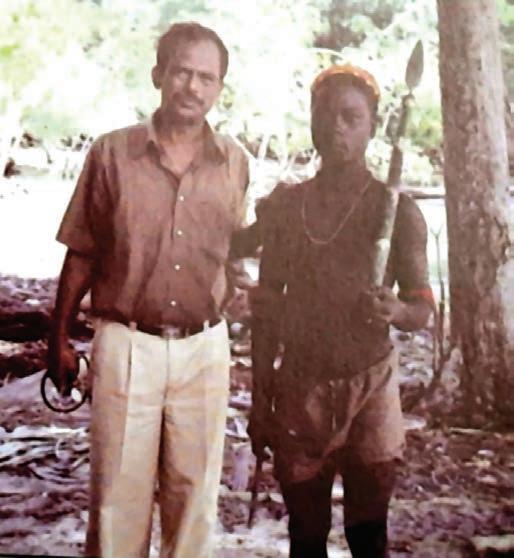
Dr Kar with a Jarawa boy
was less than 300 then. Now, numbers have risen to around 600,” Dr Kar explains.
Life with the Jarawas
Further, he adds, “Over time, I learnt the language of the Jarawas so that I could communicate with them. I used to have proper conversations with them. I used to ask tribal youths when they were planning to get married. I also visited their homes to get to know them better. I was very touched when a tribesman told me one day, ‘You are one of us. We’ll never target you’. I can recall so many instances of their compassion.”
One day, when Dr Kar was inside a deep forest with the Jarawas, he stubbed his toe on a tree. Immediately, the tribal folk rushed over to him to make sure he was not seriously hurt.
Jarawa families used to make their own antidotes from local ingredients to treat aches and pains. They largely suffered from hunting injuries and skin ulcers. But, interestingly, conditions such as hypertension and obesity eluded them, points out Dr Kar.
Unique human heritage
Though the Jarawas were given clothes and soap, etc., they used to fling the clothes gifted to them in the sea. In due course, however, they learnt to accept them. According to Dr Kar, who respected their traditions and customs, their living conditions implied they were at the Neolithic stage.
Importantly, Dr Kar believed in “maximum autonomy” for the Jarawas and “minimum intervention” on the part of the authorities. “I felt the Jarawas should be treated as a unique human heritage and state involvement should be limited to their healthcare and nutrition,” Dr Kar says.



Dr Kar also reveals that the Jarawas are forward-thinking people and the status of women in their society is very high. Girls are considered equal to boys and husbands have the same status as their wives, while divorces are unheard of. Widows and unmarried girls often stay together in the same hut, he says.
The Jarawas, who sleep on leaves and have a few, rudimentary utensils, lead very simple lives, says Dr Kar. They hunt, fish, gather fruits and honey. Their huts are unadorned though a few families may keep the heads of animals in their dwellings. Families may live as a nuclear unit or in a community hut. In the latter, 10 or 12 families may stay together, he reveals.
His interactions with the Jarawas prompted Dr Kar to put pen to paper and publish a book Andamaner Adim Janajati Jarawa in Bengali in 2009. Later translated in English, the book sparked wide interest among anthropologists and ethnographers as it offered valuable insights into the lives of the obscure Jarawas.
Dr Kar now divides his time between Kolkata and Bangalore, having left the Andaman Islands in 2022. Receiving the Padma Shri from President Droupadi Murmu at Rashtrapati Bhavan in 2023 was a “highlight”, he shares.
Time and again, Dr Kar cannot help but slip into the past to regale people around him with tales of a very unique people and a civilisation light-years away from ours.

Once there were 170 stepwells or baolis dotted across Telangana. These distinctive and historical architectural marvels were usually built around functionality and this made them unique.
Mallik Thatipalli talks to experts about the connection between stepwells and the functions they serve, and how they are actively being restored today to be converted into cultural centres and experiential spaces

Stepwells, or baolis, are historical and cultural landmarks in Telangana, dating back to the time of the Deccani and Kakatiya rulers. Many areas in Hyderabad still go by names that indicate the presence of wells –Rethibowli, Gachibowli, Puthlibowli, Doodhbowli, Gangabowli, and Haribowli – while many temples and mosques still retain them for functional uses.
Always starved for enough water, Telangana’s medieval dynasties engineered ingenious methods to source, convey, and conserve water for optimal utilisation in often hostile climatic conditions. Stepwells were critical to water algorithms and were
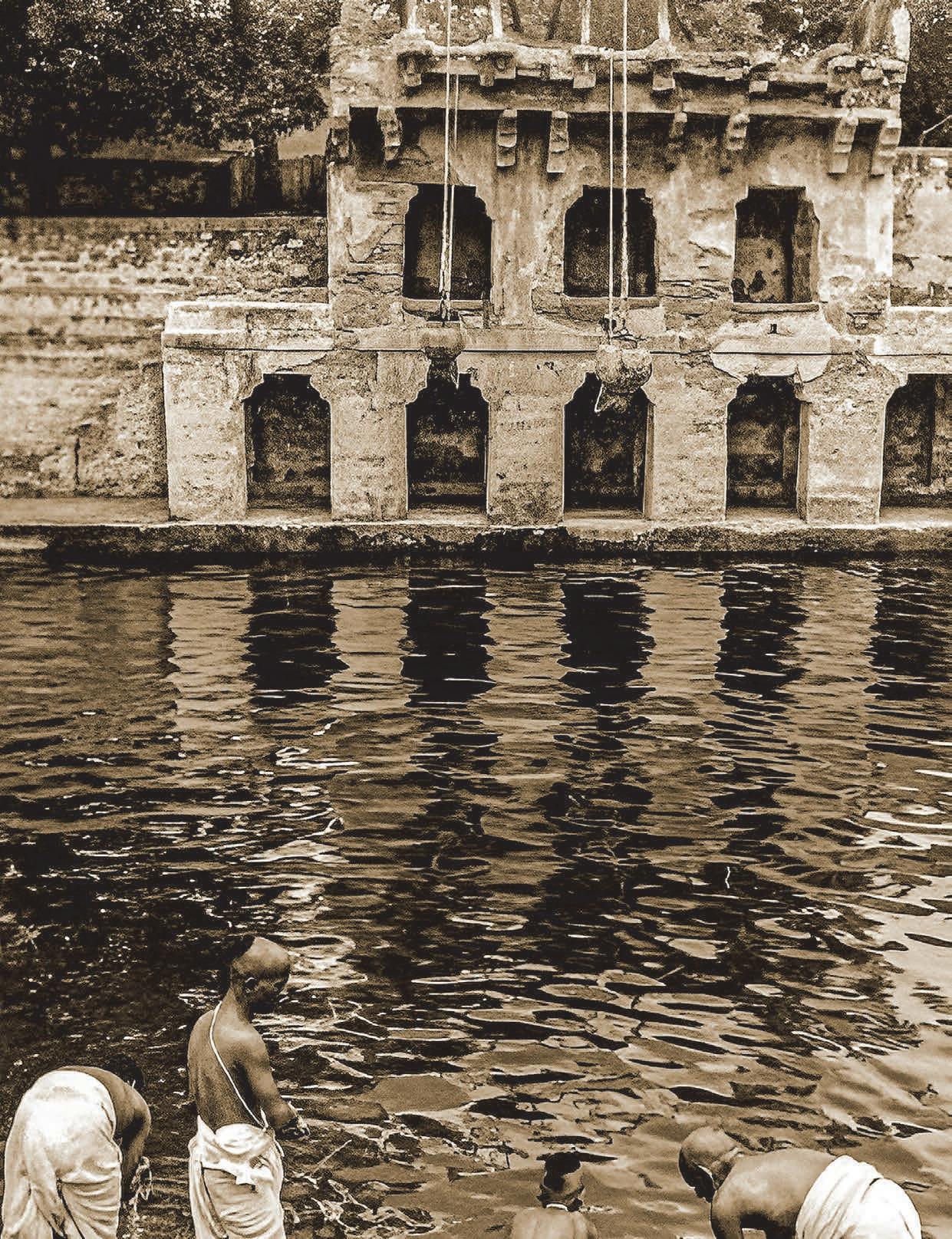
built around the axis of hydrology, geology, iconography, history, and culture of Telangana. While many were built around temple complexes, other baolis started appearing near the tombs of Sufi saints as well as at serais on major travel routes.
Senior architect Yashwant Ramamurthy, who envisioned, curated, and edited the book The Forgotten Stepwells of Telangana, says, “Most of them were attached to religious structures. Their use was very functional, allowing pilgrims to refresh themselves before entering a sacred space.”
“In Hyderabad’s old city, most baghs had a stepwell, which was used by the Muslim gentry, especially the ladies of the zenana, in the summer,” he adds.
Stepwells were not merely a source of fresh water but crucibles of nuanced refinement and cultural ethos that characterised Hyderabad’s gentility. They also gave inspiration for contemporary design. In fact, the legendary Charles Correa was so inspired by the vavs of Gujarat that he recreated those courtyards in many of his buildings as lawns and gardens, which function as break-out areas.
Stepwells are usually associated with Gujarat, Rajasthan, Delhi, and Madhya Pradesh, and Hyderabad’s boalis are lesser known. Like the ones in the other states, Hyderabad’s stepwells are architectural wonders that are also a source of water for washing, drinking, and irrigation.
The incorporation of steps made them cool sanctuaries for travellers and pilgrims. Over the years –during British rule and in the postIndependence era – these stepwells were abandoned.
Rajashree Pinnamaneni, one of the founding members of the Gandipet Welfare Society that worked on restoring the Bapughat and the Bansilalpet stepwells, says that these water monuments played a very crucial role. She explains, “From restricting urban flooding to working as aquifers that recharge groundwater levels, they fulfill crucial roles in the natural ecosystem. In fact, at Bapughat stepwell, we draw water from the well to water the gardens.”
The stepwells of Telangana are not the inverted temples found in the northern parts of the country. They are simpler structures that were very oriented around a purpose and had access steps, steeped walls, and galleries for festivities. Yashwant points out, “The step wells of Telangana are not as deep as those in Rajasthan and Gujarat, as the


water table here is higher. Also, the rock here in the Deccan (granite) is harder to crave, unlike the sandstone that is prevalent in the north and is conducive for carving.”
The iconography, decorative motifs, and embellishments in Telangana imbibe floral (lotus and brahma kamalam), animal (turtle, eagle, and elephant), and celebratory (weddings) motifs.
In the post-Independence decade, the stepwells started losing their relevance. While it is estimated that there were 170 stepwells in Telangana, almost fifty per cent have been lost due to ravages of time and negligence. A lot were lost in the 1990s, when construction booms meant that these people simply built over these water monuments.
In Hyderabad, a combination of government funding, private initiative, and crowdfunding is

helping bring the wells back to life. The Bansilalpet Stepwell Restoration, for instance, is backed by the Telangana government; the Rainwater Project; Social Venture Partners, a crowdfunding, philanthropy organisation; the nonprofit Gandipet Welfare Society, and the state government.
Recently, the Aga Khan Trust for Culture, in collaboration with the Telangana government, completed the restoration of six stepwells in the Qutub Shahi Heritage Park in Hyderabad. Between 2021 and 2022, stepwells in Gachibowli, Kokapet, Kondapur, and Goshala were restored by the government in collaboration with the Rainwater Project, a social enterprise headed by architect Kalpana Ramesh. Yashwant attributes the sudden resurgence to the formation of a new state and the rekindled pride in local identity. He states, “In 2014, when
the state of Telangana was formed, there was a resurgence of interest in its culture, cuisine, dialect, and identity. However, till then, there was no study of its rural architecture.”
The Bansilalpet stepwell is touted as the model for the restoration and maintenance of these monuments. The 17th-century stepwell almost disappeared under 2,000 tons of debris but they were removed and transformed into a cultural centre.
Kalpana Ramesh, who worked on the restoration, is thrilled with the response. She says, “We have a hundred and fifty artists performing at the stepwell in one year. 1,500 people pay a 50 rupee ticket every week to enter the stepwell, which provides revenue for its maintenance. Apart from this, the removal of garbage provides clean air, clean water, and a clean environment to the locals.”
What it has also opened up is a blueprint for the restoration of other stepwells in the city. From the ancient baoli in Osmania University Campus, built by the poetess Maha Laqa Bai, to the one in Biknoor village in Medak district, now used as a venue for weddings, stories are tumbling out from all corners of the state.
Kalpana, who has worked on restoring more than 20 stepwells in Telangana, says that citizens are coming forward, to preserve these monuments, which is great news for conservation. She says, “A builder in the old city found a stepwell on his premises and converted it into a club house area and an experiential space. We believe around 100 stepwells are on private properties, and if the owners can show interest in saving them, it would be an amazing step in safeguarding our collective heritage.”
As the city of Hyderabad transforms into its next phase as a top destination for IT and technology, these heritage structures are sutradars, sharing both the tangible and intangible history of Telangana. Their impact can be immense, not only as inspiration for students and architects but also for adding character to a city.


World Cancer Day is marked on February 4 to raise awareness of cancer and to encourage its prevention, detection and treatment. In his column, Dr P Raghu Ram suggests ways to lower your risk of getting breast cancer
With some 200, 000 new cases being diagnosed every year, the incidence of breast cancer has overtaken cervical cancer to become the most common cancer affecting women in India. Every four minutes, a woman is diagnosed with breast cancer in India. This is only the tip of the iceberg, as many breast cancers are not reported to the Cancer Registry and many states do not even have a robust Cancer Registry.
In a striking contrast to the Western world where most breast cancers are diagnosed over the age of 50, more than 50 per cent of breast cancers in India are diagnosed between the ages of 25-50 years.
Lifestyle changes
Several lifestyle changes have been shown to significantly decrease breast cancer risk even in those at high risk of developing breast cancer. Here are some steps one can take to lower the risk:
• Weight control: Being overweight or obese increases the risk of breast cancer. This is especially true if obesity occurs later in life, particularly after menopause.
• Physical activity: Physical activity can help you maintain a healthy weight, which, in turn, helps prevent breast cancer. For most healthy adults, at least 150 minutes of aerobic activity per week is essential (30 minutes a day for at least five days a week). Brisk walking/swimming are the best exercises.
• Breast feeding: Breast feeding reduces the risk of developing breast cancer and evidence is accumulating to suggest that breast feeding helps to reduce risk of developing uterine and ovarian cancer as well. The longer breast-feeding is done, the greater the protective effect.
• Limit dose and duration of hormone replacement therapy: Combination hormone therapy (oestro-

gen and progestogen) for more than three to five years increases the risk of breast cancer. If a lady is taking hormone therapy for menopausal symptoms, it is important to ask the doctor about other options.
Avoid hormone therapies
One may be able to manage postmenopausal symptoms with non-hormonal therapies, such as physical activity. If one decides the benefits of shortterm hormone therapy outweigh the risks, one should use the lowest dose that works for a short period of time. There is strong evidence to suggest that oestrogen-alone HRT in women who have had their uterus removed (hysterectomy) does not raise breast cancer risk. Oestrogen is however linked with a small increase in blood clot and stroke risk.

There’s also some evidence that hormonal types of birth control raise the risk of breast cancer. These include birth control pills and intrauterine devices (IUDs) that release hormones. But the risk is very small. And it drops after one stops using hormonal birth control.
Limit alcohol, Don’t smoke
• Limit alcohol: The more alcohol one drinks, the greater the risk of developing breast cancer. If one chooses to drink alcohol — it is important to limit oneself to no more than one drink a day.
• Don’t smoke: Accumulating evidence suggests a link between smoking and breast cancer risk, particularly in premenopausal women. In addition, not smoking is one of the best things you can do for your overall health.
Healthy diet
A healthy diet is important too and here are some key points to follow:
• Eat a variety of different foods and eat the right amount to have a healthy weight
• Eat plenty of foods rich in fibre and at least five portions of fruit and vegetables a day

• Limit foods that contain a lot of fat, especially animal (saturated) fat
• Limit sugary food and drinks and lower salt intake
• Drink around two litres of fluids a day (such as water, herbal tea, tea, coffee or low calorie drinks)
Be Breast Aware
‘Breast Awareness’ is about becoming familiar with the breasts and the way they change throughout a woman’s life. ‘Breast Awareness’ as a concept is gaining increasing acceptance world over. Here are changes that one should be aware of:
• Painless lump or thickening in the breast that feels different from the rest of the breast tissue
• Change in size - it may be that one breast has become noticeably larger or noticeably lower
• Nipple has become inverted (pulled in) or changed its position or shape
• Rash on or around the nipple
• Blood stained discharge from one or both nipples
• Puckering or dimpling of the skin
• Swelling under the armpit or around the collarbone (where the lymph nodes are)
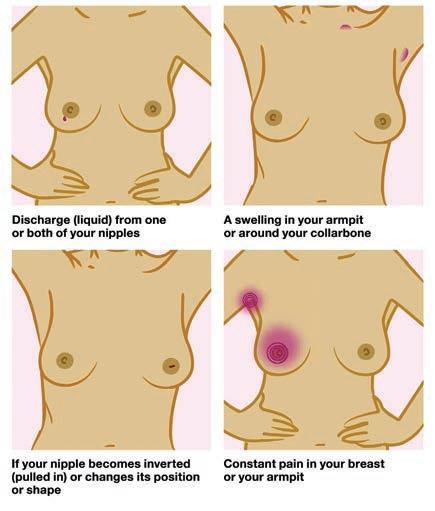
BREAST AWARENESS: 5-POINT CODE
1. Know what is normal for you 2. Know what changes to look and feel for 3. Look and feel
4. Report any changes to your doctor without delay
5. Have a screening mammogram (X-ray of the breast) every year if you are aged 40 and over
November 2023
Prof PV Chalapathi Rao Awards: Third edition
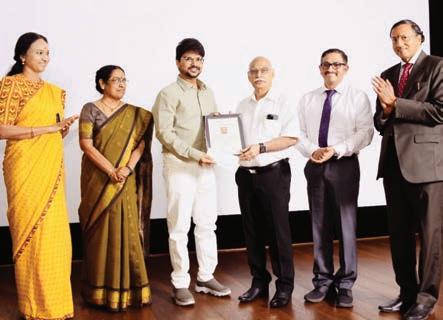
On November 14, the third edition of ‘Prof PV Chalapathi Rao Best outgoing trainee annual awards in Broad Specialties and Sub Specialties’ were given away in memory of Dr P V Chalapathi Rao, who served KIMS Hospitals selflessly as director of medical education for close to two decades.
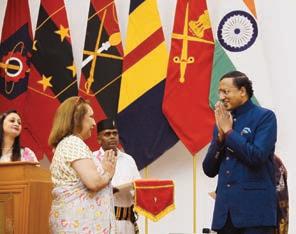

On November 17, Dr Raghu Ram conducted a significant and impactful breast cancer advocacy session, to empower spouses of officers in the Indian army and frontline soldiers, at the Military College of Electronics and Mechanical Engineering (MCEME) auditorium in Secunderabad.
The question and answer session went beyond the duration of the talk and Dr Raghu Ram received a standing ovation.
Dr P Raghu Ram delivered the inaugural ‘Sushruta Oration’, instituted to commemorate the department of surgery at AIIMS Nagpur, which completed four positively eventful years.
The doctor received a standing ovation after his oration, titled ‘Transforming Breast Healthcare in India— celebrating 16 positively eventful years’, and was much appreciated by trainees and practising surgeons in and around Vidarbha Region—Nagpur, Chandrapur and Gondia (Maharashtra), who attended the event.
Sharing a highlight of this visit, Dr Raghu Ram said, “A senior Registrar from department of surgery in AIIMS, who recently got selected in the NEET Super Specialty exam, told me that his resolve to pursue surgical oncology as a career had strengthened manifold, after listening to my oration. This truly made my visit to Nagpur extra special.”


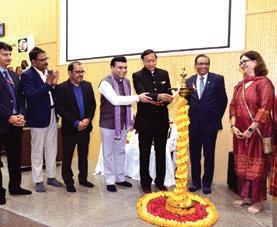


Dr Raghu Ram achieved the rare distinction of becoming the youngest-ever recipient of the Lifetime Achievement award in the 85-year old history of The Association of Surgeons of India (ASI)—Asia Pacific’s largest and world’s second largest surgical organisation.
Shri Venkaiah Naidu, former vice-president of India was the chief guest at the convocation ceremony hosted by the ASI, during its 83rd annual Congress in Visakhapatnam on December 14. This event was attended by over 5,000 surgeons from India and renowned surgeons from overseas.
During the convocation ceremony, he felicitated Dr Pattabhiramaiah—a renowned surgeon from Vijayawada and Dr Raghu Ram, who were the 2023 recipients of the ASI’s Lifetime Achievement awards, which is the highest recognition that is conferred upon an ASI member for his or her outstanding contribution to the art and science of surgery.
Dr Raghu Ram received a standing ovation from the surgical fraternity gathered after the award was bestowed upon upon him.
Paying rich tributes, Shri Venkaiah Naidu said the Padma Shri and Dr BC Roy National awardee, Dr P Raghu Ram is a
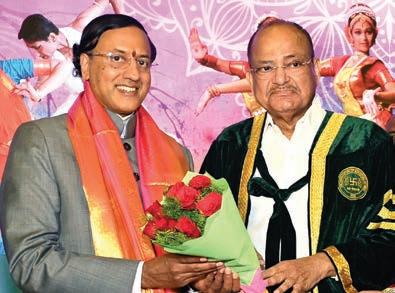

world-renowned surgeon and indeed the worthy son of a worthy father, Dr PV Chalapathi Rao, who also served as the president of ASI.
Shri Venkaiah Naidu said, “I am delighted to learn that for the first and only time in ASI’s 85-year history, father and son have served at the apex position of this esteemed organisation. Dr Raghu Ram’s outstanding contribution towards promoting the art and science of surgery has brought laurels to his family, colleagues and nation.”
LINKS:
Audio Visual - Highlights of Dr Raghu Ram’s ‘body of work’ & major honours
https://www.youtube.com/watch?v=zJLjGtpa0tQ&list=PLR NpTEx-YwbSzHk23W8AiHSqvfgVxHhEm&index=4
Shri Venkaiah Naidu at the Convocation ceremony, ASICON 2023, Visakhapatnam
https://www.youtube.com/watch?v=BX0umDh9RAk&list=P LRNpTEx-YwbSzHk23W8AiHSqvfgVxHhEm&index=2
‘I want to be like Dr Raghu Ram’ - Former SASI student at world-renowned Mayo Clinic, USA
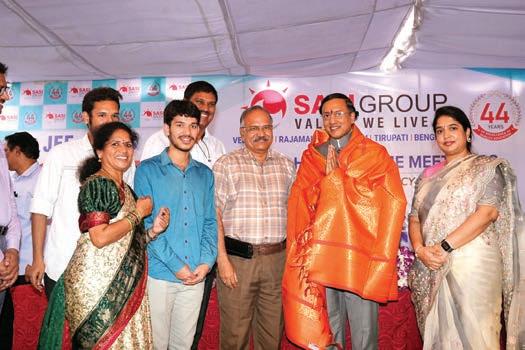
On December 26, Dr Raghu Ram was the chief guest at SASI Institute located in Velivennu, a small hamlet near Rajahmundry, which trains students aspiring for higher education. Several toppers who cracked the NEET and JEE entrance in 2023 with high scores and their parents were there in full force.
The physics teacher recalled on stage a recent phone call with a former student of SASI Institute, who is currently at the world-renowned Mayo Clinic in Rochester doing his sub specialty residency in oncology. This student (Veda Vyas) mentioned to his teacher, ‘I want to be like Raghu Ram’.
Dr Raghu Ram interacted with many parents, most of whom are from very low socio-economic background, who toiled day and night to put together a sum of money to educate their children. They were particularly overwhelmed and moved by the doctor’s message to students, reminding them never to forget taking care of their parents when they grow older and never to forget their motherland and mother tongue.
LINK:
https://www.youtube.com/watch?v=lu8HHm22wKQ
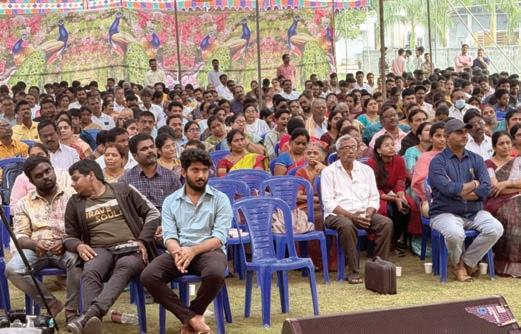
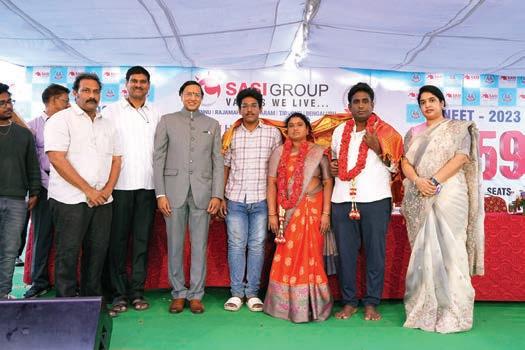
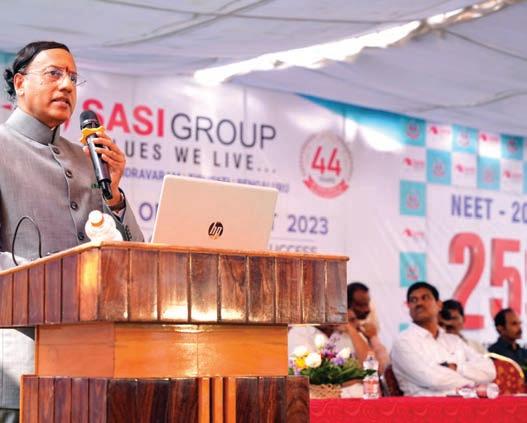



Dr P Raghu Ram featured on the Hyderabad Public School (HPS)’s Wall of Fame, in the Echoes of Time Museum alongside Satya Nadella - chairman and CEO, Microsoft; Ajay Banga - World Bank chairman; Prem Watsa - chairman, Fairfax Financial Holdings; Shailesh Jejurkar - COO, Proctor and Gamble; current, former chief ministers, Union ministers and many other famous and distinguished personalities from across the world, who had studied at the school.
Reflecting upon his visit to his alma mater on December 31 during the centenary celebrations, Dr Raghu Ram said, “My school gave me everything I needed to face the world, in addition to nurturing within me, the most important human values of courtesy, compassion, empathy, honesty and humility. An above average student, a daydreamer, who always chose to sit by the window in the class, my schooling taught me the
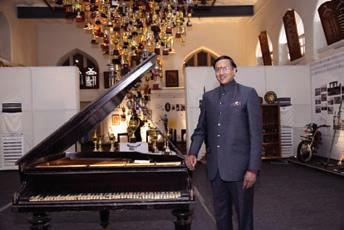
importance of how to be, and more importantly, how not to be!”
“Inspired by my teachers, coupled with proactive motivation from my maternal grandfather, I explored the vernacular and developed an affinity to reading, writing and speaking in my mother tongue - which has stayed with me all along. All in all, ever grateful to the divine force for the privilege of being able to spend my formative years in an institution steeped in history and greatness, which has undoubtedly had an indelible impact on my life.”
LINK:
Glimpses of NDTV coverage of ‘Echoes of time’ Museum at HPS https://www.youtube.com/watch?v=1d5PtJ-DqpE
High-profile UK visitor at KIMS-USHALAKSHMI Centre for Breast Diseases
Sir Professor Neil Mortensen, the immediate past president of the Royal College of Surgeons of England, who was recently knighted by His Excellency King Charles III, visited KIMS Hospitals and KIMS-USHALAKSHMI Centre for Breast Diseases. He paid rich tributes to Dr Raghu Ram, and applauded his noble mission to improve the delivery of breast healthcare in India.
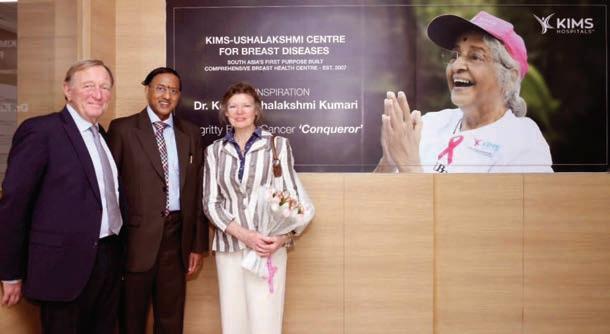

January 2024
An innovative public awareness panel discussion, on ‘Breast Cancer Advocacy and Screening’, was held during the 66th annual Conference of All India Congress of Obstetrics and Gynaecology (AICOG 2024) at HICC, in Hyderabad.
About 10, 000 delegates attended this Congress, which was held from January 6th to 10th, 2024. Dr Shantha Kumari, chairperson of AICOG 2024 and past president of FOGSI, who organised this session said that there was a pressing need for gynaecologists to be empowered about the need to make women ‘breast aware’ and to refer patients in time to specialists that will ensure those diagnosed with breast cancer derive the best possible benefits through early detection.
She complimented Dr Raghu Ram for his passion to breast cancer advocacy and for spearheading various such initiatives all across Telugu States and creating the muchneeded awareness about the importance of early detection.
Speaking on this occasion, Dr P Raghu Ram, who was a special guest at this panel said, “On most occasions, a gynaecologist is the first port of call for women presenting with a breast health issue. It is vitally important for them to ensure that all women presenting with a breast lump must undergo triple assessment, which includes clinical examination, mammography and ultrasound guided core needle biopsy to confirm or exclude breast cancer.”
“It is disturbing to see many patients being referred for FNAC (Fine needle aspiration cytology), which is inadequate, not accurate and also has a potential for false positive diagnosis, which can then mislead patients, resulting in wrong diagnosis and incorrect treatment,” he added.
He also outlined the importance of mammogram as the gold standard investigation for women presenting with a breast lump and cautioned gynaecologists about referring patients for thermography, which has not been proven to be an effective investigation in the evaluation of breast lumps.
UBF’s yeomen service
Amala Akkineni, UBF patron, who was the guest of honour paid rich tributes to Dr Raghu Ram and UBF, for creating the much-needed awareness about the importance of early detection of breast cancer through a number of unique and innovative initiatives over the past 17 years.




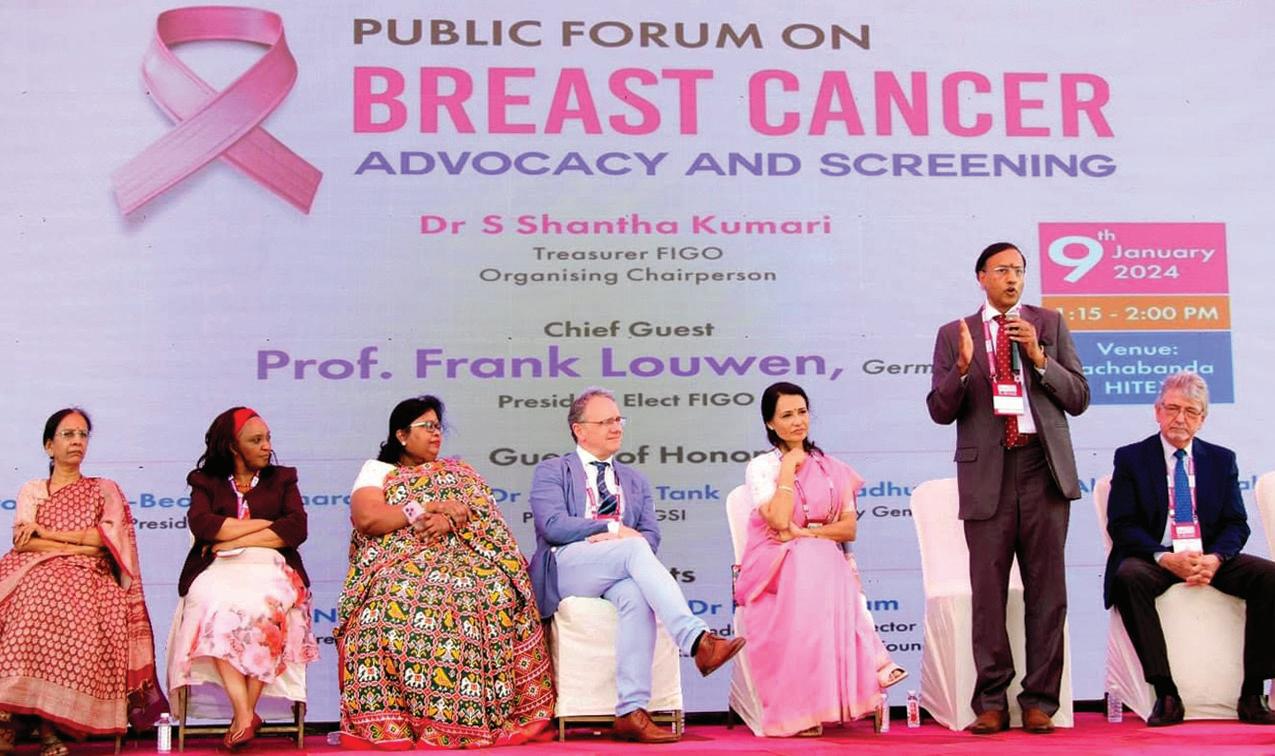
She said, “I too like most women despite being educated was unaware that women over 40 years must undergo screening mammogram until Dr Raghu Ram brought about this awareness in the city and all across India. I have been fortunate to be associated with UBF as its patron, which is doing yeomen service to empower women about early detection in addition to have implemented a population based breast cancer screening programme in Telangana and Andhra Pradesh, that has served to be a benchmark across the nation.”

Damayanthi, a retired IAS officer and a breast cancer ‘conqueror’ stressed that her diagnosis was delayed because she was referred for FNAC of her breast lump. She underlined the importance of undergoing core needle biopsy to confirm or rule out breast cancer. She also highlighted that breast conservation followed by radiotherapy can be as effective as mastectomy and complimented Dr Raghu Ram, for not only conserving her breast but also reshaping it after a lumpectomy using oncoplastic techniques, to ensure excellent aesthetic outcome with no defect and a scar which is hardly visible.
“My diagnosis was delayed because I was referred for FNAC (Fine Needle Aspiration Cytology) instead of core needle biopsy, which gave a false reassurance that the lump was not a cancer. Triple assessment by way of mammogram, ultrasound and ultrasound guided core needle biopsy must become the standard of care. Doctors must take time and counsel women about options for breast conservation where feasible and about oncoplastic techniques to ensure good cosmetic outcome.”
Damayanthi
Retired IAS officer and breast cancer ‘conqueror’
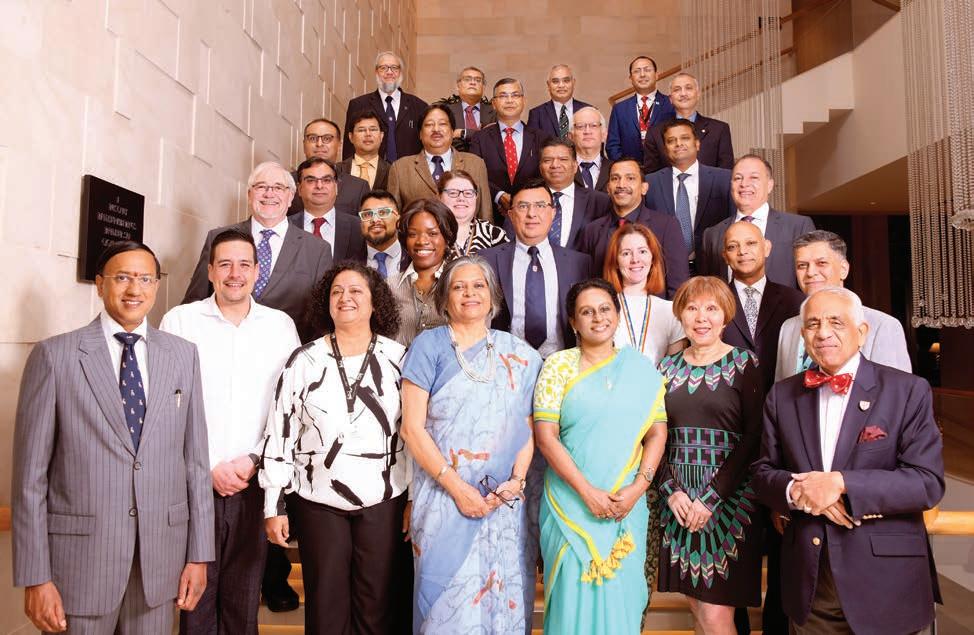
Dr P Raghu Ram hosted the world-renowned and prestigious Intercollegiate Final MRCS Examinations, which was held by the Royal College of Surgeons of England (RCS England) in Hyderabad from January 17-22, 2024.
Some 35 eminent examiners from the UK, India, Malaysia and the Middle East flew down to Hyderabad to assess 240 surgical trainees, who came from all over India and abroad to take this examination, which was spread over six days.
Established in 1540, The Royal College of Surgeons of England is one of the world’s oldest and United Kingdom’s most prestigious Surgical Royal College. With a global multidisciplinary membership of over 30,000 surgeons spread across the UK and in over 100 countries internationally, the Royal College promotes excellence in the practice of the art and science of surgery through its role in setting standards, facilitating research, providing quality assurance and
supporting training professional development.
Speaking on the occasion, Dr Raghu Ram, who is the youngest surgeon of Indian origin to have been conferred Honorary FRCS (England), which is the highest recognition conferred by RCS England said, “The MRCS Examination tests the knowledge, experience and core clinical competence expected of surgical trainees at the end of their basic surgical training. For the first time in 500 years, this prestigious examination was held in Hyderabad in 2015 and it has been a distinct honour and privilege to have been entrusted with the responsibility of hosting this prestigious MRCS every year ever since it started.”
Further he added, “I am delighted that through this landmark initiative, thousands of surgical trainees are able to sit the examination in India itself, which saves the hassles of travelling and staying in the UK, which can be prohibitively expensive.”

Ushalakshmi Breast Cancer Foundation
Hyderabad, India
Empowering people...impacting lives
www.ubf.org.in
World’s first mobile app on breast health in 12 languages (English, Hindi, Telugu, Tamil, Kannada, Malayalam, Gujarati, Punjabi, Bengali, Marathi, Oriya & Assamese).


Launched by Mr Amitabh Bachchan (2017)
An initiative of the Ushalakshmi Breast Cancer Foundation
https://apps.apple.com/us/app/abcs-of-breast-health/id1482487468
Google play store
https://play.google.com/store/apps/details?id=org.avantari.breasthealth&pcampaignid=web_share

